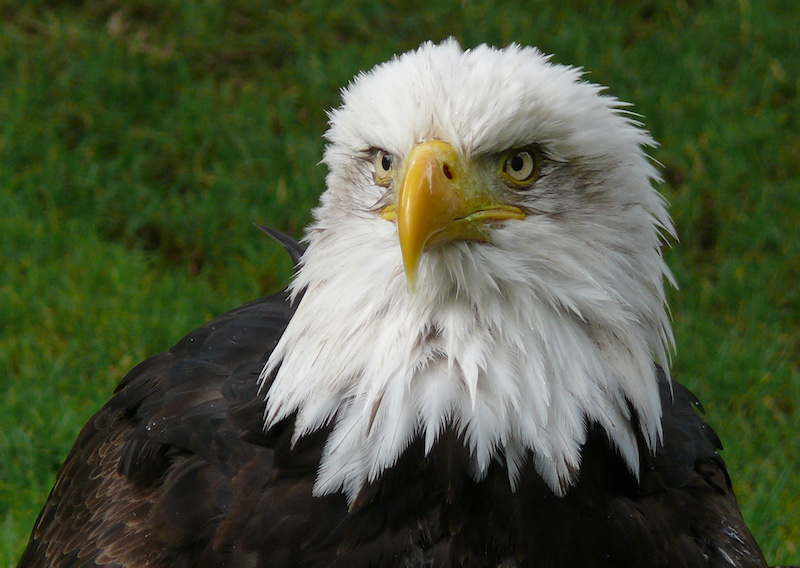Have you ever gazed up at the sky and wondered whether the majestic bird soaring above was a hawk or an eagle? While both are impressive birds of prey, they have distinct characteristics that set them apart. Let’s dive into the fascinating world of these raptors and explore the differences and similarities between hawks and eagles.
What Makes Hawk and Eagle Unique
1. Hawks
Hawks are medium-sized birds of prey belonging to the family Accipitridae. They are known for their incredible eyesight, which allows them to spot prey from great distances. Hawks have sharp talons and a curved beak designed for hunting. They typically weigh up to 8 pounds and have a wingspan of around 5 feet. There are various species of hawks, with some, like the red-tailed hawk, being larger than others. Hawks are diurnal hunters, meaning they hunt during the day, often from hidden perches in trees.
| Hawk | Eagle |
|---|---|
 |  |
2. Eagles
Eagles, also members of the Accipitridae family, are generally larger and more powerful than hawks. They possess long, broad wings and heavy, muscular bodies. Eagles can weigh up to 18 pounds or more and have a wingspan that can exceed 8 feet. Known for their strong legs, curved talons, and hooked beaks, eagles are adept hunters who often catch larger prey, including fish, snakes, and medium-sized mammals. Eagles are also diurnal and are found across Europe, Africa, and Asia.
Similarities Between A Hawk and An Eagle
Despite their differences, hawks and eagles share several common traits:
- Carnivorous Diet: Both birds primarily feed on meat, hunting small mammals, birds, and insects. Eagles also catch fish and reptiles.
- Family Accipitridae: Both belong to this family, characterized by strong hooked bills and sharp talons used for hunting.
- Diurnal Habits: Hawks and eagles are active hunters during the day and rest at night.
- Strong Physical Features: They both have powerful legs, sharp claws, and keen eyesight, crucial for spotting and capturing prey.
Key Differences Between A Hawk and An Eagle
- Size and Strength:
- Hawks: Typically smaller, with a wingspan of about 5 feet and a weight of up to 8 pounds. They are agile and fast, making them excellent hunters of smaller prey.
- Eagles: Larger and more robust, with wingspans reaching over 8 feet and weights up to 18 pounds. Their size and strength allow them to take down larger prey.
- Species Diversity:
- Hawks: There are approximately 250 species of hawks worldwide, including accipiters like the Cooper’s hawk and buteos like the red-tailed hawk.
- Eagles: Fewer in number, with about 74 species, eagles are classified into groups such as sea eagles, booted eagles, and snake eagles.
- Physical Appearance:
- Hawks: Often have rounded wings and long tails, with colors ranging from reddish-brown to chocolate brown.
- Eagles: Feature broad wings, a heavier beak, and a more robust build. They are usually golden brown or blackish-gray with distinctive yellow beaks.
- Vocalization:
- Hawks: Known for their high-pitched screeching sounds.
- Eagles: Produce more subtle screams, which can be surprising given their larger size.
- Nesting and Reproduction:
- Hawks: Build bulky nests in trees and on rocks. They lay eggs multiple times, with 2 to 7 eggs per clutch.
- Eagles: Prefer nesting on tall cliffs or trees. Eagles lay eggs less frequently, typically laying two eggs per clutch.
- Lifespan:
- Hawks: Generally live around 15 years.
- Eagles: Have a longer lifespan, often reaching up to 30 years in the wild.
Finishing Touch
While hawks and eagles share many similarities as powerful birds of prey, they have distinct differences in size, strength, species diversity, appearance, vocalization, nesting habits, and lifespan. By understanding these differences, you can better appreciate the unique characteristics of each bird and confidently identify them in the wild. Next time you see a raptor soaring above, take a closer look—you’ll be able to tell whether it’s a hawk or an eagle, and you’ll know a bit more about these incredible creatures that rule the skies.





